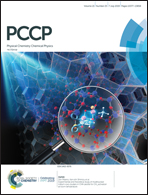Order–disorder transition in p-oligophenyls
Abstract
Poly(para-phenylene) has been recognized as one important family of conducting polymers upon doping with donors or acceptors. This system possesses a chain-like structure with infinite benzene rings linked with a single C–C bond. Oligophenyls as models of poly(para-phenylene) with short chains in the para position were found to exhibit superconductivity at transition temperatures ranging from 3 K to 123 K upon doping. Structural studies have revealed that there exist order–disorder transitions in many p-oligophenyls with almost doubled lattice constants in the b and c directions at low temperatures. Such a transition is of relevance to the understanding of the emergence of novel quantum functionality where unconventional polaronic interactions are relevant for the new emerging theory of superconductivity in this system. However, the accurate temperatures for the order–disorder transitions amongst these p-oligophenyls are still needed to be determined. The chain length effects on the order–disorder transitions in this system remain unknown. Here we report the systematic investigation of the evolution of the vibrational properties of the crystalline p-oligophenyls over a wide temperature range. The order–disorder transition is identified by three indicators, the lowest energy peak together with the intensity ratios between the 1280 cm−1 and 1220 cm−1 modes and between the two modes at around 1600 cm−1. A phase diagram of the order–disorder transition temperature and the melting curve for p-oligophenyls are thus established. The former is found to increase with the chain length and saturates at around 350 K for poly(para-phenylene).



 Please wait while we load your content...
Please wait while we load your content...